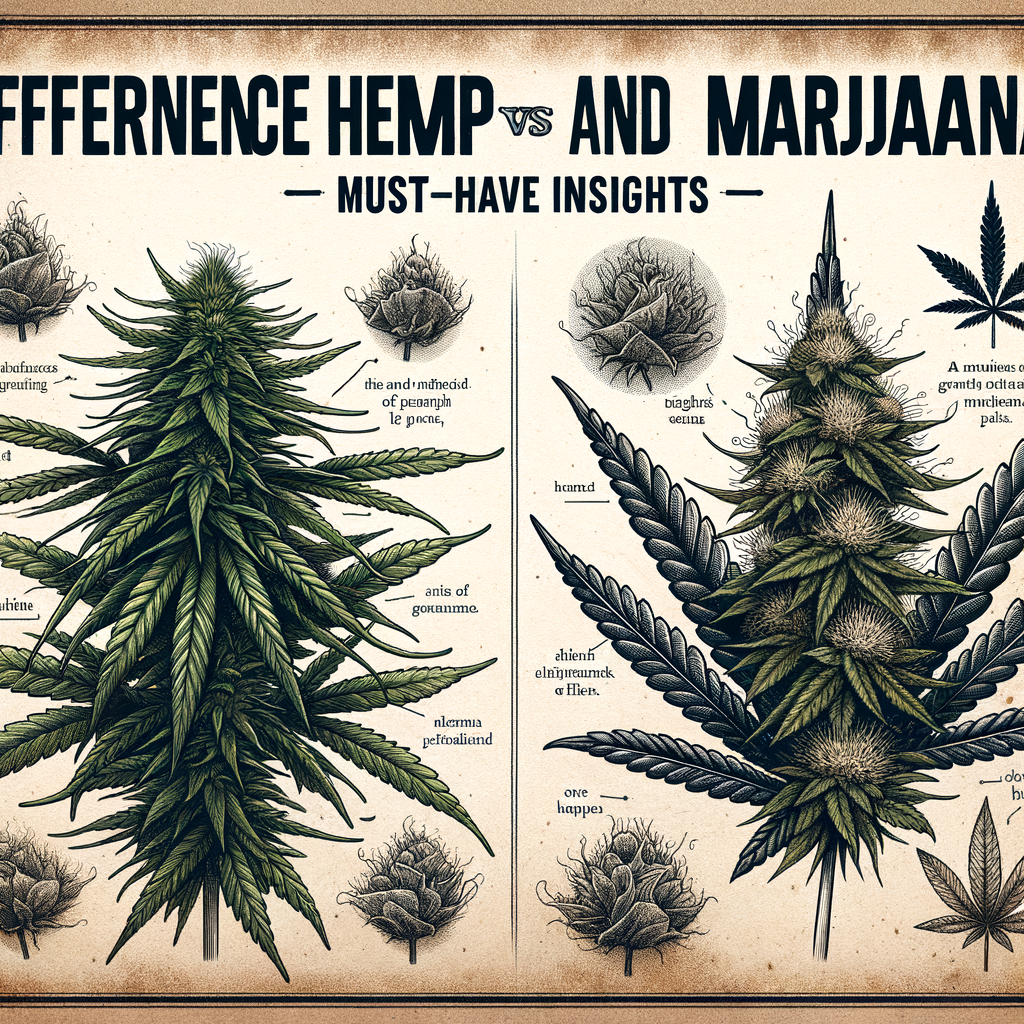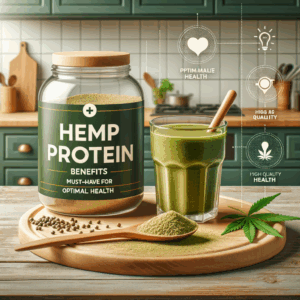
Difference Between Hemp and Marijuana: Must-Have Insights
- Understanding Hemp and Marijuana: The Basics
- The Chemical Composition
- Cultivation Practices
- Uses and Applications
- Legal Status
- Health Benefits
- The Economic Impact
- Environmental Considerations
- The Consumer Perspective
- Future Trends in Cannabis
- Conclusion: The Need for Clarity
- Frequently Asked Questions (FAQs)
- References
Understanding Hemp and Marijuana: The Basics
When discussing cannabis, many often confuse hemp and marijuana. Although they belong to the same plant species (Cannabis sativa), key differences exist between the two. Understanding these distinctions is essential for anyone interested in cannabis for recreational, medicinal, or industrial purposes.
Hemp typically refers to varieties of Cannabis sativa cultivated for industrial uses, while marijuana strains are grown for their psychoactive properties. While both plants have similarities, their chemical compositions and uses vary significantly. Let’s explore these differences in more detail.
The Chemical Composition
One of the most striking differences lies in the chemical makeup of hemp and marijuana. The primary compound in marijuana is tetrahydrocannabinol (THC), the substance responsible for the “high.” In contrast, hemp contains very little THC, usually below 0.3%. Instead, hemp is rich in cannabidiol (CBD), a compound known for its therapeutic benefits without causing intoxication.
This difference in THC levels explains why hemp is legal in many regions. The low THC content makes it less likely to be abused or misused. Conversely, marijuana is subject to stricter regulations due to its psychoactive effects.
| Aspect | Hemp | Marijuana |
|————|———-|—————-|
| THC Content | <0.3% | Varies, often 5% – 30% |
| CBD Content | High | Moderate to low |
| Purpose | Industrial, medicinal | Recreational, medicinal |
Cultivation Practices
Growing hemp and marijuana also involves distinct practices. First, hemp plants can be cultivated more densely than marijuana. This is because hemp plants grow tall and thin, while marijuana plants spread out more and require room.
Hemp thrives in a variety of climates and can grow in various soil types. This versatility makes it a popular choice for farmers looking for an easy-to-grow crop. Conversely, marijuana needs specific conditions, such as controlled temperatures and humidity levels, which may drive up production costs.
Farmers often harvest hemp plants for their fibers and seeds. In contrast, marijuana plants are usually harvested for their flowers, where the highest concentrations of cannabinoids reside.
Uses and Applications
Hemp and marijuana serve different purposes. Hemp has a myriad of practical applications. Its fibers are excellent for textiles, paper, and biodegradable plastics. Furthermore, hemp seeds are a nutrient-rich food source, packed with protein, omega-3 fatty acids, and vitamins. Industrial hemp is also an eco-friendly alternative to petroleum-based products.
On the other hand, marijuana is primarily used for medicinal and recreational purposes. Many people seek out marijuana for its therapeutic benefits, which may help with conditions such as chronic pain, anxiety, and even epilepsy. Recreational users often enjoy marijuana for its uplifting or relaxing effects.
Legal Status
The legal status of hemp and marijuana varies widely around the world. In recent years, many countries have moved to legalize hemp due to its low THC content and multitude of uses. The U.S. Farm Bill of 2018 legalized industrial hemp production, leading to a surge in interest and investment in hemp-derived products.
Marijuana, however, remains a gray area in many regions. While some states in the U.S. have fully legalized marijuana for recreational use, others maintain strict control or prohibition. The global landscape is changing, with many calling for reform; however, legislation often lags behind public opinion.
Health Benefits
Both hemp and marijuana offer health benefits, albeit through different pathways. Hemp-derived CBD has gained attention for its potential therapeutic effects. Studies suggest that CBD may help with anxiety, inflammation, and even epilepsy, all without the psychoactive side effects associated with THC.
Conversely, marijuana’s THC has also demonstrated medicinal benefits. It can help alleviate nausea, stimulate appetite, and provide pain relief. Many patients prefer marijuana for conditions that benefit from both THC and CBD, as the two compounds work better together in what’s known as the “entourage effect.”
The Economic Impact
The booming cannabis industry has significant economic implications. The hemp industry alone is projected to grow substantially in the coming years. Consumers are increasingly embracing hemp products, from food and health supplements to textiles and construction materials.
Moreover, the marijuana market is also expanding rapidly. States that have legalized marijuana have seen considerable tax revenue and job creation. This influx of cash not only benefits state budgets but also stimulates local economies. As legalization trends continue, both industries could potentially transform economies.
Environmental Considerations
When it comes to environmental impact, both hemp and marijuana have their pros and cons. Hemp is often regarded as a sustainable crop. It requires less water than cotton and can grow without pesticides. Additionally, hemp plants rejuvenate the soil, making them an excellent choice for crop rotation.
The environmental effects of marijuana cultivation can differ. Indoor marijuana farms may consume significant energy due to artificial lighting and climate control. However, outdoor cultivation can have fewer negative environmental impacts, if done sustainably. Awareness and best practices in cultivation can help mitigate these effects.
The Consumer Perspective
As consumers become more educated about their choices, the demand for hemp and marijuana grows. People are seeking natural alternatives to synthetic products. This trend is especially evident in the wellness space, where CBD oil from hemp has skyrocketed in popularity.
Conversely, marijuana continues to be a sought-after product for both therapeutic and recreational users. The market segmentation between various strains and products (edibles, oils, etc.) has made it easier for consumers to find options that align with their needs.
Future Trends in Cannabis
Looking toward the future, the cannabis industry is poised for significant growth. With increasing legalization, both hemp and marijuana will likely see a surge in research and development. Innovations in product formulations, sustainable farming, and even technology could shape the landscape.
Hemp-derived products, in particular, are expected to see widespread adoption across various sectors. From sustainable packaging to building materials, hemp could become a staple in eco-friendly solutions. On the other hand, marijuana may evolve with new strains and consumption methods, further expanding its market appeal.
Conclusion: The Need for Clarity
Understanding the difference between hemp and marijuana helps consumers make informed choices. Each has unique properties, uses, and benefits. As the cannabis landscape evolves, clarity becomes increasingly vital for consumers, businesses, and lawmakers alike.
Both hemp and marijuana provide essential contributions: hemp leads the way in sustainability and industrial use, while marijuana broadens the spectrum of therapeutic and recreational applications. Together, they illustrate the diverse potential of the cannabis plant.
Frequently Asked Questions (FAQs)
1. Is CBD legal everywhere?
CBD is legal in many places, especially if derived from hemp with less than 0.3% THC. However, check local laws.
2. Can you get high from hemp?
No, hemp contains less than 0.3% THC, which is not enough to produce psychoactive effects.
3. What are the main uses of hemp?
Hemp is used for textiles, paper, biodegradable plastics, food, and health supplements.
4. Is marijuana safe to use?
While marijuana has therapeutic benefits, it comes with risks, particularly if used excessively. Consult healthcare providers for guidance.
5. Can you grow hemp at home?
The ability to grow hemp at home depends on your local laws. Check regulations before planting.
6. What is the entourage effect?
The entourage effect refers to how compounds in cannabis work better together, enhancing the overall therapeutic effect.
7. How can I consume CBD?
CBD can be consumed through oils, capsules, edibles, and topicals.
8. What is the biggest challenge in growing marijuana?
Maintaining optimal growing conditions, including light and humidity, is crucial and can be difficult.
9. Do hemp and marijuana have the same genetics?
Yes, both come from the Cannabis sativa species; however, they are bred for different traits.
10. Why is marijuana so expensive?
The costs are driven by cultivation processes, regulatory challenges, and demand.
References
– U.S. Farm Bill of 2018: USDA
– Health effects of cannabis: CDC
– Hemp Industry Overview: Hemp Business Journal
– Legal Status of Cannabis: NORML
– Benefits of CBD: Harvard Health Blog

